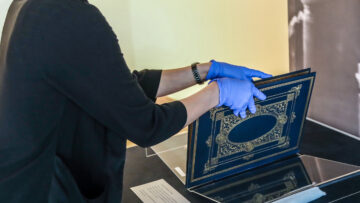The Need for a Transatlantic Partnership
The WWII alliance between the democratic Western Powers and the communist Soviet Union quickly turned to rivalry after the war.
Rebuilding Europe created competition as an anxious West watched Soviet influence grow in Eastern Europe. This atmosphere of fear was heightened by the threat of nuclear weapons.
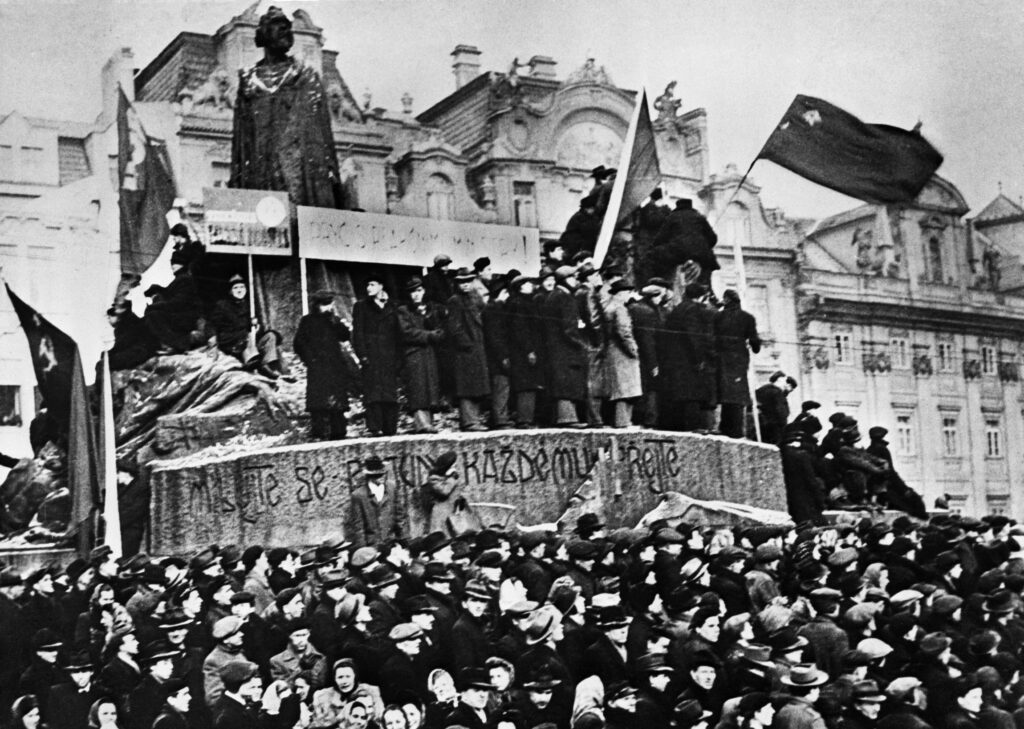
Western nations agreed that a military alliance was needed for Soviet deterrence. For the United States, this idea broke a 150-year tradition of “non-entangling alliances” with Europe. Skilled diplomacy proved essential in accomplishing a defensive military alliance and treaty.
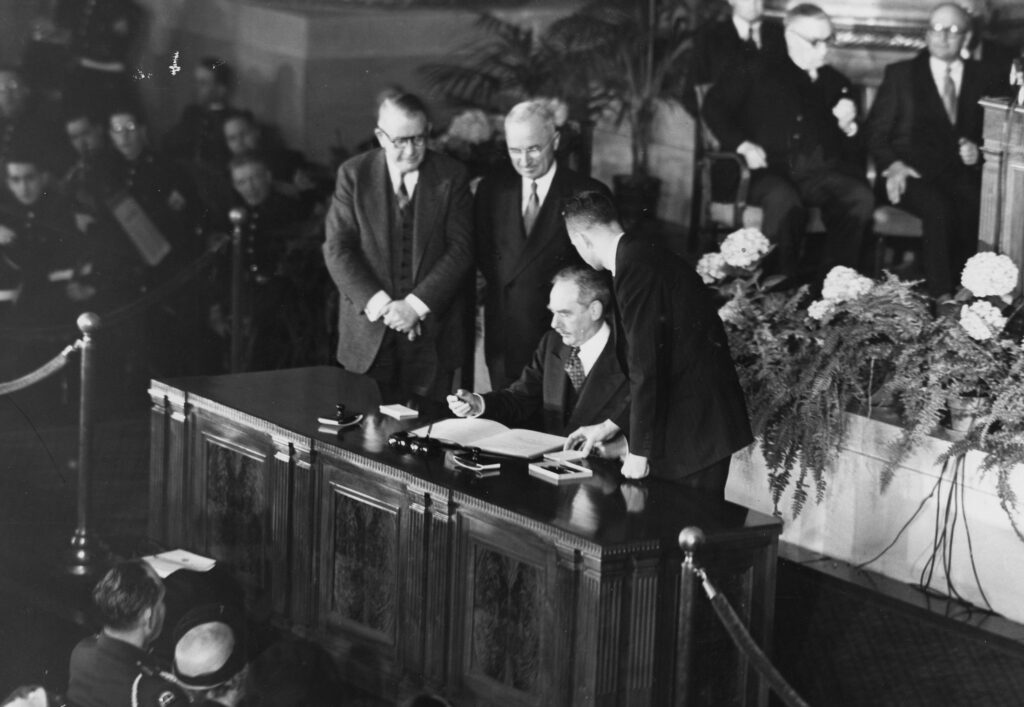
This radical shift in U.S. foreign policy could not have been achieved without powerful allies in the Senate.
Senator Arthur Vandenberg (R-MI), Chair of the Foreign Relations Committee, had been a long-time advocate of an independent foreign policy, but the Soviet threat changed his mind. In a speech before the Senate in May 1948, he asked for a resolution of support for a mutual defense treaty that fell within the framework of the UN Charter and adhered to the U.S. Constitution and Congressional authority. The “Vandenberg Resolution” passed in June 1948 and paved the way for the North Atlantic Treaty.

“The most dramatic thing was the [1948] Soviet takeover of the Czech government. That scared the living bejesus out of everybody in Western Europe.”
Foreign Service Officer Jack Hickerson
Bipartisan Foreign Policy
Seasoned Foreign Service Officers Jack Hickerson and Ted Achilles were involved with internal and external negotiations for a mutual defense treaty from the beginning. Saying “politics is the art of the possible,” Hickerson insisted on bipartisan language and Senate inclusion. They worked together for three weeks eating nothing but “ulcer lunches of stale sandwiches” to help draft the Vandenberg Resolution.
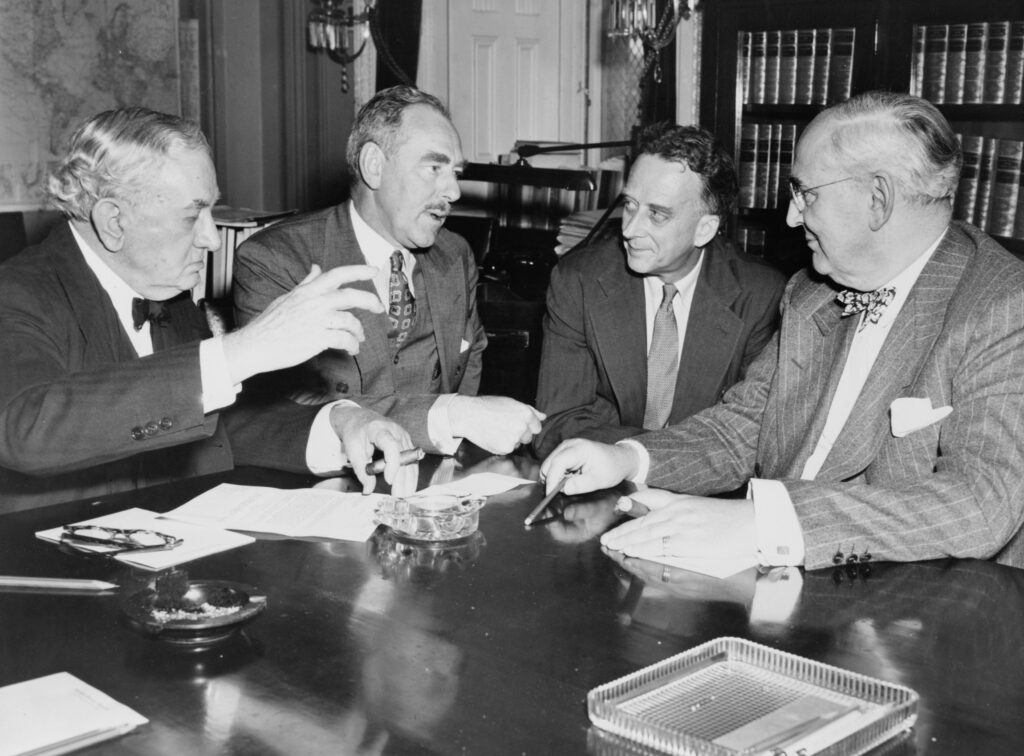
Treaty talks with foreign partners began in the summer of 1948, as the Soviet blockade of West Berlin added urgency. Achilles remembered working without air conditioning in the sweltering heat and forging tight friendships under the pressure.
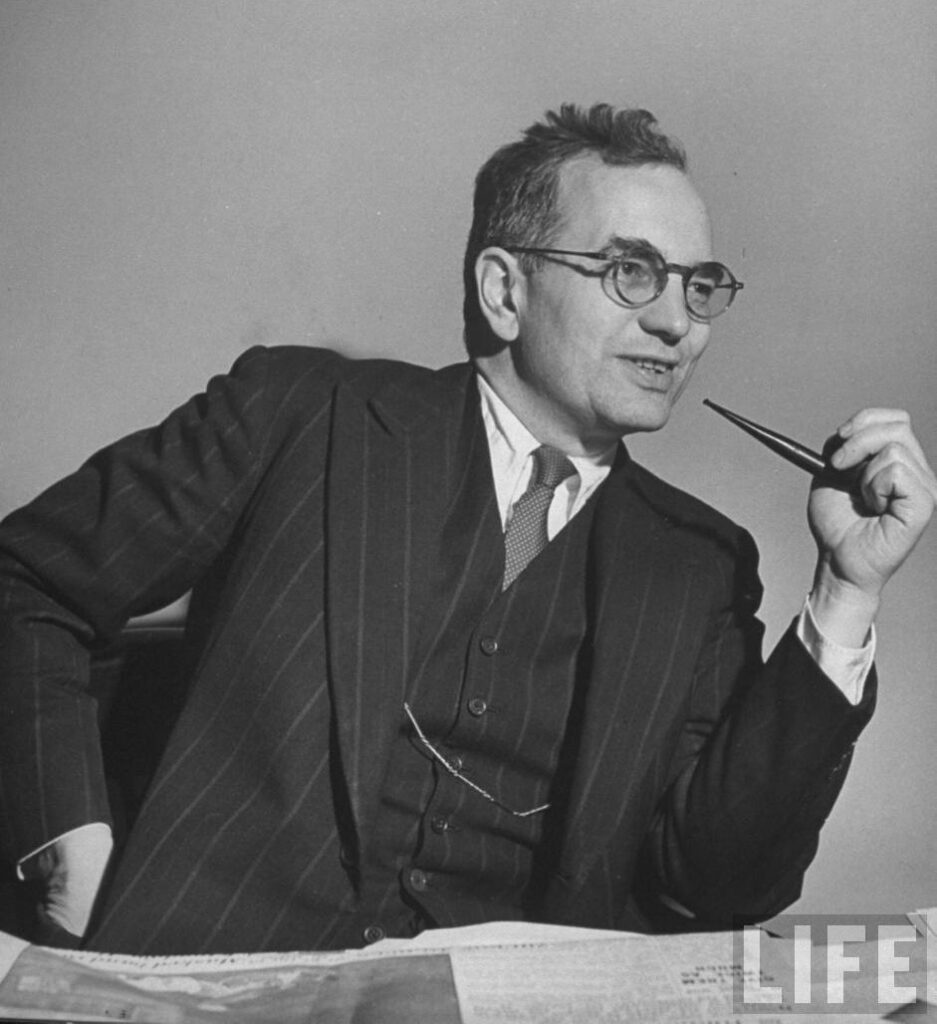
Hickerson persuaded the group that war would best be avoided by convincing the Soviets that any attack on Western Europe would “bring in the industrial might of Pittsburgh and Detroit.” For a future appeal to Senators, he insisted the treaty language be something “an Omaha milkman could understand.”
The group finished the draft in October 1948. Neither President Harry S. Truman nor his Republican opponent Thomas Dewey made it an issue in the 1948 presidential campaign.
Truman was expected to lose. Not making it partisan proved a brilliant move as Truman won the election, the Democrats swept Congress, and the draft treaty kept its Republican support.
In July 1949, the treaty easily passed. Vandenberg remarked it was the “first treaty in the history of the United States being concluded with the advice and consent of the Senate.”
Evolution of NATO Membership
In the 75 years since its creation in 1949, NATO has responded to regional and global threats, guaranteeing the freedom and security of its members via political and military means.
The fall of the Berlin Wall in 1989 proved a pivotal moment for the alliance. Political instability followed the collapse of the Soviet Union and the violent conflict in Yugoslavia. This prompted NATO’s expansion eastward. The alliance accepted 14 new members from the former Soviet sphere from 1999 to 2020, which helped consolidate democracy and stability in Europe “whole and free.”
On September 12, 2001—the day after terrorist attacks on the United States—NATO invoked Article 5 of the Treaty (an attack on one NATO member is considered an attack on all) for the first and only time in its history.
Russia’s annexation of Crimea and invasion of Ukraine underscores NATO’s role to guarantee collective security throughout its territory. In the face of evolving global challenges, NATO continues to serve as a foundation stone for transatlantic peace and freedom.
“…our Alliance is and will remain united, as it must. For the hopes of future generations are in our hands.”
U.S. Secretary of State Madeleine Albright
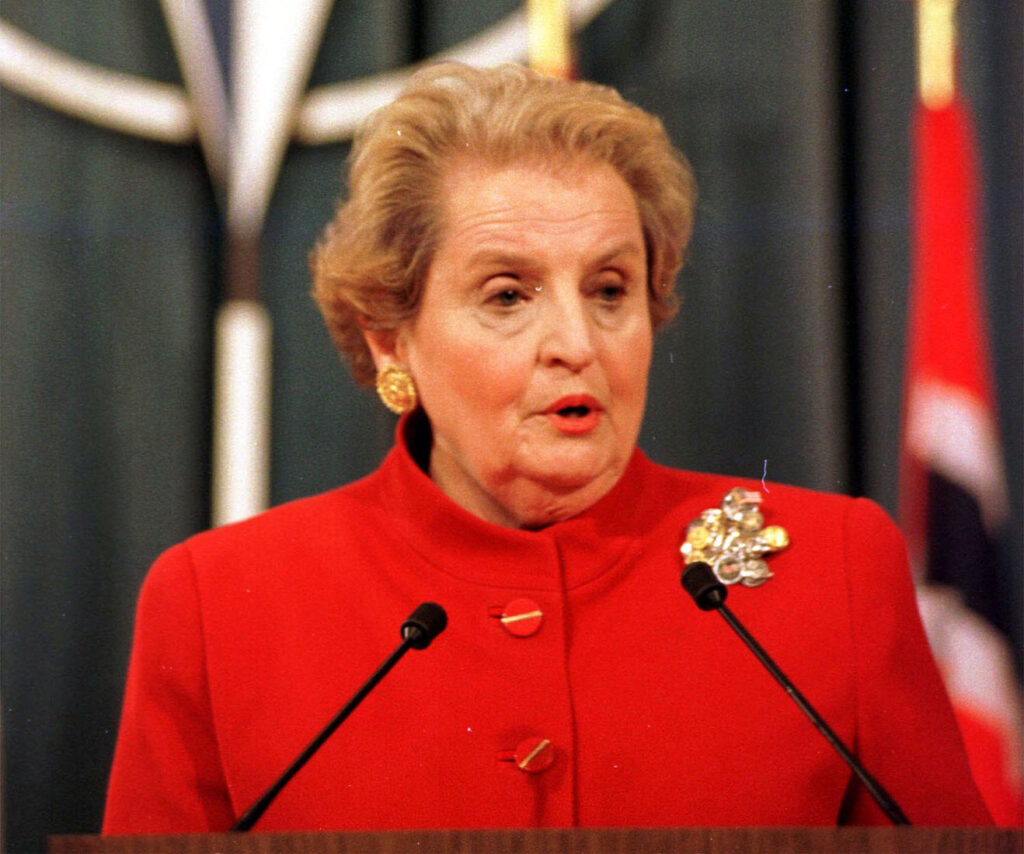
Read more about Madeleine Albright’s work to expand NATO.
Timeline of NATO Membership
- 1949 Belgium, Canada, Denmark, France, Iceland, Italy, Luxembourg, Netherlands, Norway, Portugal, United Kingdom, and United States
- 1952 Greece and Türkiye
- 1955 West Germany
- 1982 Spain
- 1990 Reunification of Germany incorporates former East Germany
- 1999 Czechia, Hungary, and Poland
- 2004 Bulgaria, Estonia, Latvia, Lithuania, Romania, Slovakia, and Slovenia
- 2009 Albania and Croatia
- 2017 Montenegro
- 2020 North Macedonia
- 2023 Finland
- 2024 Sweden
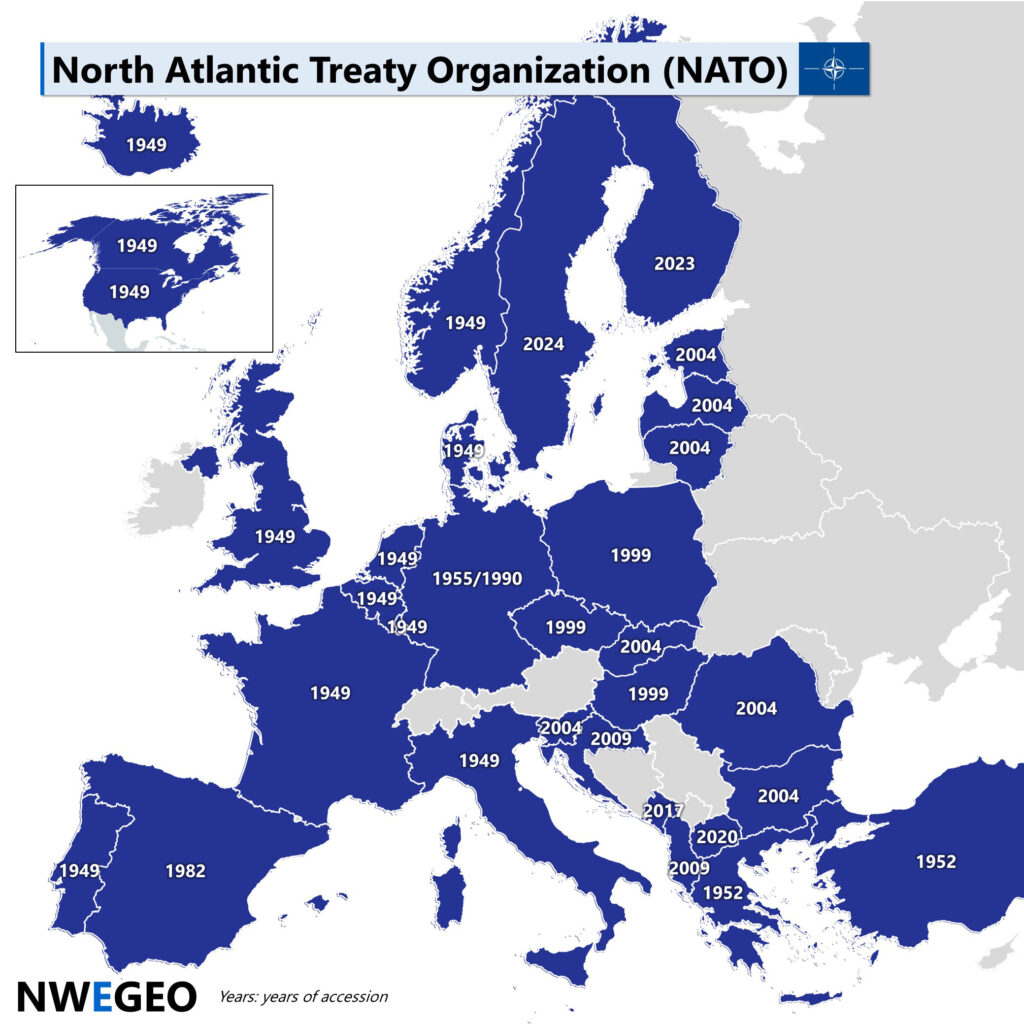
Collection Highlights
NATO Summit commemorative plaque
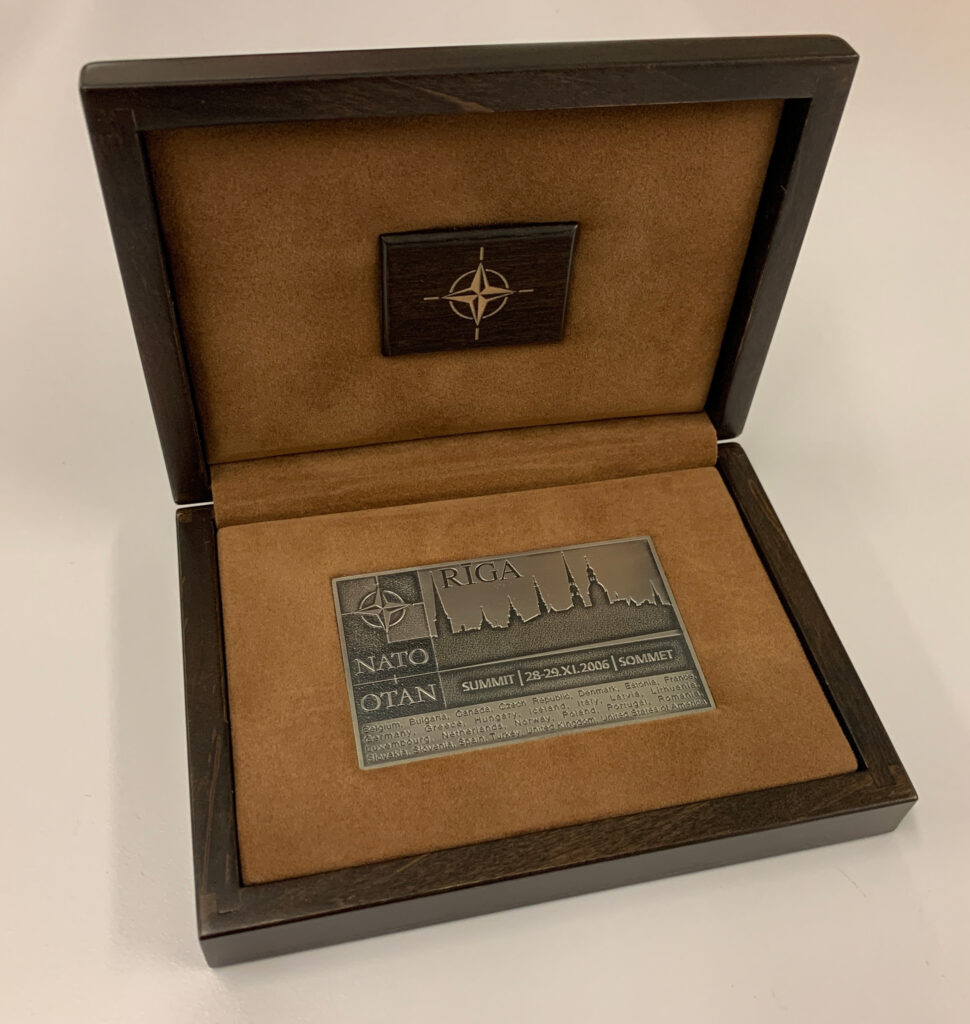
Secretary of State Condoleezza Rice received this commemorative plaque, housed in a clamshell presentation box while attending the NATO summit in Riga, Latvia, in November 2006. Latvia joined NATO just a few years earlier in 2004.
Silver box decorated with NATO country flags
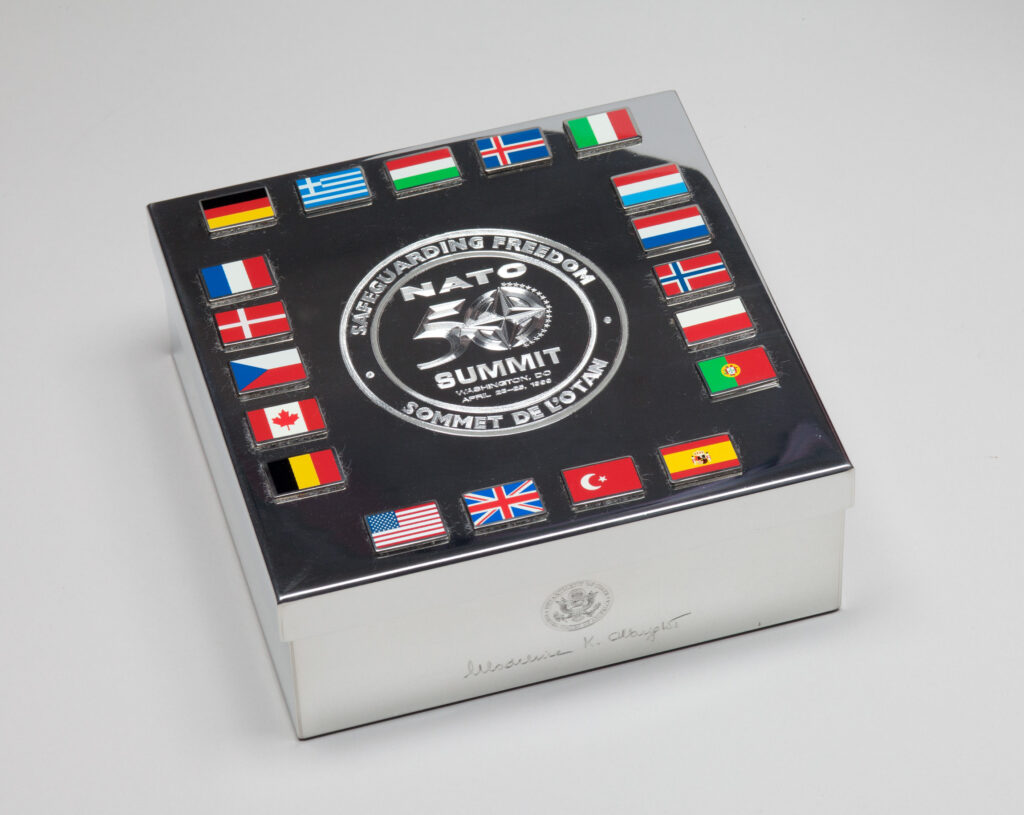
NATO celebrated its 50th anniversary in 1999 and held a summit in Washington, DC, that April. This silver keepsake box—featuring the flags of NATO’s 19 members—was given as a gift to foreign leaders by Secretary of State Madeleine Albright to mark the occasion.
1999 also saw the largest expansion of NATO’s membership since its creation, with the addition of three countries: Czechia, Hungary, and Poland.
Printing of 1818 Treaty with Sweden
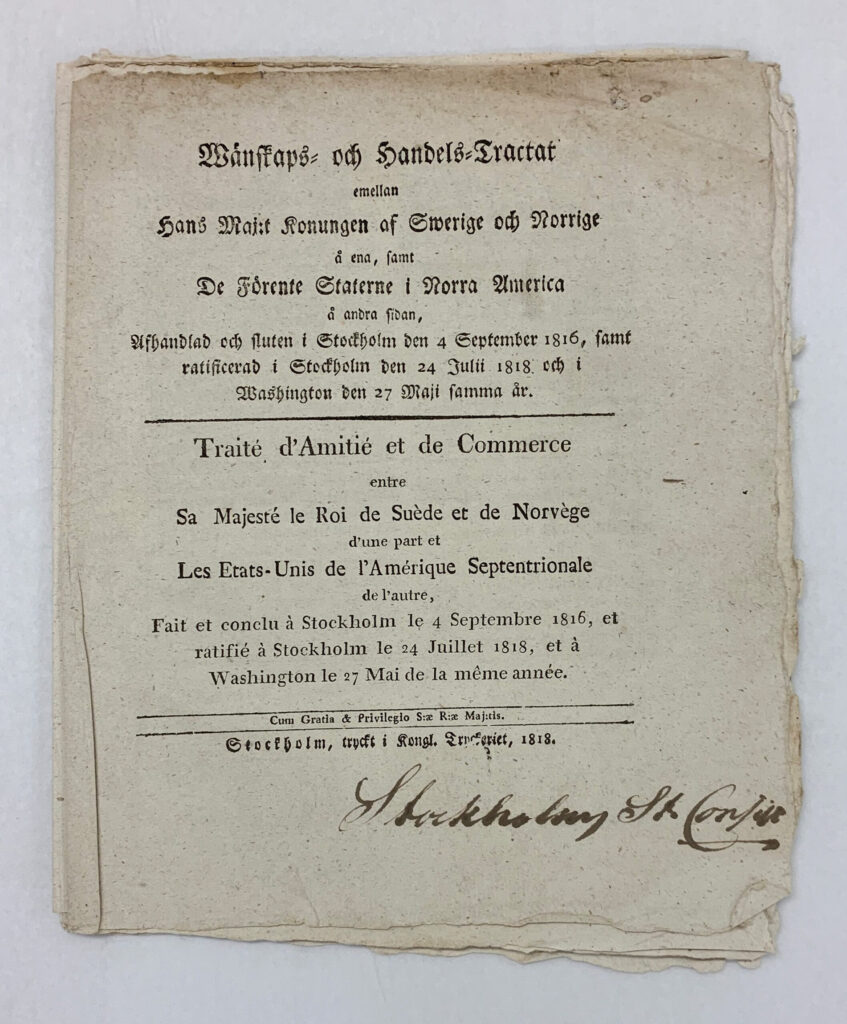
The U.S.-Sweden Treaty of Amity and Commerce, originally signed in 1783, shows the longstanding friendship between the two countries. The friendship was strengthened with the accession of Sweden into NATO in March 2024.
This is a printing of a renewed version of the original 1783 treaty, completed in 1818.
The North Atlantic Treaty
On April 4, 1949, representatives of the United States, Canada, and 10 Western European nations met in Washington, DC, to sign a mutual defense pact against possible aggression from the Soviet Union. The treaty, pictured below, formed the legal basis of the North Atlantic Treaty Organization, or NATO.
The treaty, on loan from the National Archives and Records Administration, will be on display at NMAD from August 1 to September 26, 2024.
See the Exhibit
This exhibit will be on display in the lower level of the NMAD pavilion through September 2024. Non-State Department employees can view the exhibit during any of our public programs.



